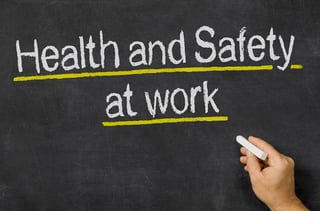 Building a workplace culture takes time, and changing it can take even longer. But when it comes to safety, the importance of investing time, resources and energy can’t be overstated.
Building a workplace culture takes time, and changing it can take even longer. But when it comes to safety, the importance of investing time, resources and energy can’t be overstated.
A workplace culture is built around the behaviours and attitudes of staff at all levels, usually over a long time. If you need to shake-up the safety culture of your workplace, it’s worth realising that drastic change won’t happen overnight. It will take small adjustments motivated by a clear vision and purpose.
If you’re leading cultural change at your workplace, here’s five things you must do:
1. Assess And Benchmark
To create a clear roadmap of where you want your workplace to go, you first have to understand where you are starting. To achieve that, you need to complete an honest, and sometimes ruthless, assessment of your current situation. That means reviewing your systems and processes, gauging staff knowledge and attitudes and collating the relevant data that will paint your cultural picture. It can seem a daunting task, but thankfully a range of intuitive and powerful tools have been developed to help you get started.
Find out more about Safety Culture and how it gives you a unique insight into your organisation’s safety capability.
Keep in mind than an assessment of your workplace is only half the equation. Understanding where that assessment sits in comparison to the rest of your industry and the best practices of the sector are an essential part of knowing where to improve.
2. Develop An Action Plan
The assessment and benchmarking process is going to provide solid data, and reveal your organisation’s pain points, knowledge gaps and areas for attention. The next step is to address those with a robust action plan. How is your organisation going to improve? What steps must it take to achieve change? What are the measures for success? Any action plan must include measurable and achievable goals, and be regularly reviewed and evaluated to make sure it stays on-track and up-to-date.
3. Get The Right Support
You could prepare a world-beating safety culture action plan, but it’s still going to falter without the backing of senior management. It’s important that executives, managers and key influencers are on board from the start, aware of what you’re trying to achieve. If they feel part of the process and contribute to its development, then it’s going to be much easier to implement your recommendations.
Their involvement will also be essential in communicating any changes or new initiatives to their own staff. By virtue of their position and expertise, senior managers brings a certain amount of organisation clout that will be a key part of driving cultural change across your workplace.
4. Strive For Continuous Improvement
The systems, processes, software and tools that guide work health and safety are always evolving. Don’t be afraid to introduce new innovations, overhaul processes and drive change that can improve your organisation’s safety culture. This means being proactive, even after your action plan is underway. Getting the right mix of workplace safety processes in place could take time, but it’s important that you keep aiming for new benchmarks for your organisation that will ultimately influence your workplace safety culture.
5. Communicate And Educate
Without properly informing your organisation about its safety plans, your goals will ultimately go unfilled. This may mean clearly defining each staff member’s role and responsibilities, and educating them about the importance of workplace safety. This can be achieved in a number of ways, including organisational intranet, staff newsletter and payslips, bulletin boards and as a standard agenda item at staff meetings. Remember that cultural change is a marathon, not a sprint. But with small steps and regular communication across your organisation, small improvements can lead to drastic change.



